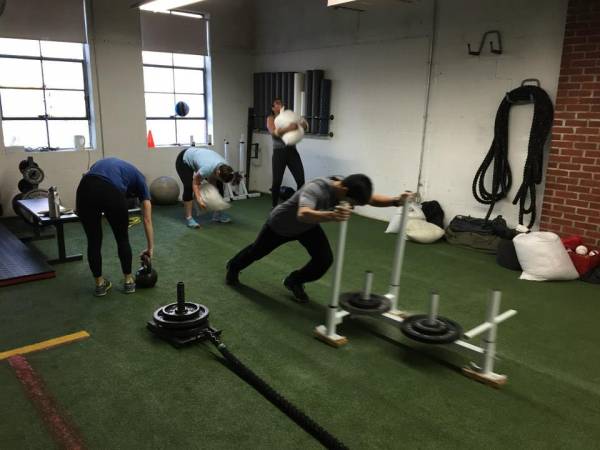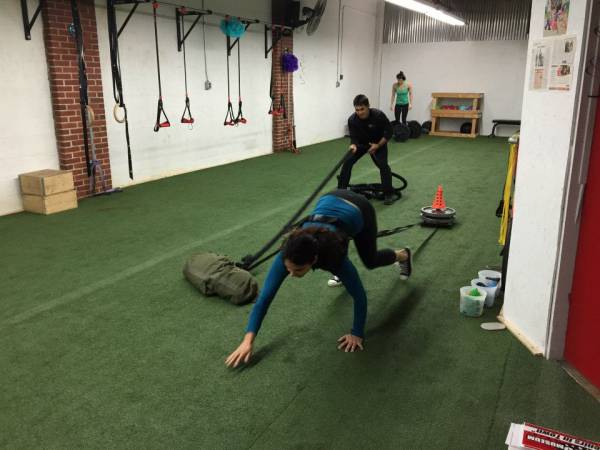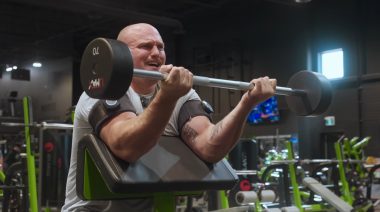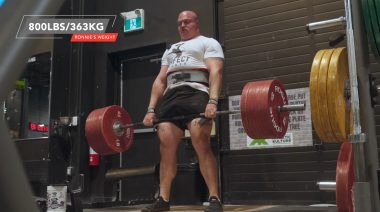A 2015 study published in the Journal of Strength and Conditioning Research compared a conventional strongman training program to a typical resistance training program. This was done to determine any difference in effect on performance enhancement.
A Study of Strength
Thirty rugby players experienced with resistance training participated in this study. Researchers assessed the following markers:
- Body composition
- 30-meter (33-yard) sprint time
- Standing long-jump distance
- Seated medicine ball chest presses
- Vertical jump height
- Hand grip strength
- 15-meter (50-foot) weighted sled pull
- The pro agility test: 4.5-meter (5-yard) sprint to the right, 9-meter (10-yard) sprint to the left, 4.5-meter (5-yard) meter sprint to the right
A five-minute warm up preceded the tests. Between each test a ten-minute rest period was allowed.
Setting Up the Program
A seven-week training program was implemented for both the traditional resistance and strongman training program. The traditional and strongman exercises were selected based on biomechanical similarity and weight-loads were equated between the two groups. The exercises used in the study were ones used in general strength and conditioning programs of strongman athletes for the improvement of strength and power.
“It stands to reason that short-term strongman programs are just as effective as traditional resistance training programs when attempting to improve body composition[.]”
Similar training loads were used for:
- The log lift and clean and jerk
- The car axle press and military press
- The over-arm prowler pull and one-arm row were based on the participants’ perceived rate of exertion based on the Borg Scale.
The study participants were required to choose their desired movement speed for the farmer’s walk, deadlift, and one-arm row. For the squat, clean and jerk, log press, and sled pull, they were instructed to move as explosively as possible.

The Strongman Training Group Protocol
- Heavy sled pull – Start in a four-point stance and go as hard as possible for 25 meters. Artificial turf was the surface used to drag the sled over.
- Prowler pull – Pull the 30-meter (33-yard) rope attached to a 30kg (66lb) sled to the hip with one arm, pausing between pulls.
- Farmer’s walk – Grab the resistance in each hand and walk forward for 14 meters (15 yards), around a cone, and back to the start.
- Log lift – Participants could use any method, provided each repetition started from the ground. Additionally, the participants had to stand upright, with knees and elbows extended.
The lifts were performed in a consecutive order:
- Log lift
- Farmers walk
- Axle press
- Sled pull
- Arm-over-arm prowler pull
The training program protocols were:
- Train up to 75 minutes biweekly on nonconsecutive days
- Training exercises performed in a controlled manner
- Training load increased by 2% each week, assuming participants maintained proper form
- Deloading was implemented in week four, using exercise loads from week one
- Training was supervised by qualified training instructors
- All efforts were documented
“In plain English the take-home message is this: you can get stronger and fitter with many tools provided you use them safely.“
All participants were encouraged to perform ancillary training, consisting of pre-habilitation and cardiovascular conditioning. In this mode, they were encouraged to perform two pre-habilitation sessions each week along with two cardiovascular sessions to improve aerobic capacity. Note that these training modes were not able to be monitored by the researchers.
The Study Results
Within-group analyses indicated that all tests improved with training in both the strongman and traditional training groups. No significant between-group differences were noted in functional training measures following seven weeks of resistance training.
Only small positive changes were noted between groups regarding muscle mass improvements, acceleration performance, and large gains in 1RM exercises such as the bent over row, normally associated with both strongman competitions and traditional training.
Minimal positive changes in the 1RM strength of squatting and deadlifting, standing long jump ability, change-of-direction ability, and sled pushing performance were associated with traditional training when compared to strongman training.

Training Applications
Exercise program designers now have the evidence relative to the efficacy of strongman training programs. It stands to reason that short-term strongman programs are just as effective as traditional resistance training programs when attempting to improve body composition, muscular function, and performance.
In plain English the take-home message is this: you can get stronger and fitter with many tools provided you use them safely. If you want to get better in a specific event (i.e., log overhead press) perform that event repetitively.
Check out these related articles:
- 33 Reasons to Train Strongman
- What Strongman Training Can Teach Us About Getting Strong
- An Introduction to Implement Training: Get Strong Like a Strongman
- What’s New On Breaking Muscle Today
References:
1. Winwood, P.W. et al, “Strongman vs. Traditional Resistance Training Effects on Muscular Function and Performance.” Journal of Strength and Conditioning Research 29(2): 429–439, 2015.
Photos courtesy of Emily Socolinsky at Five x 3 Training.






